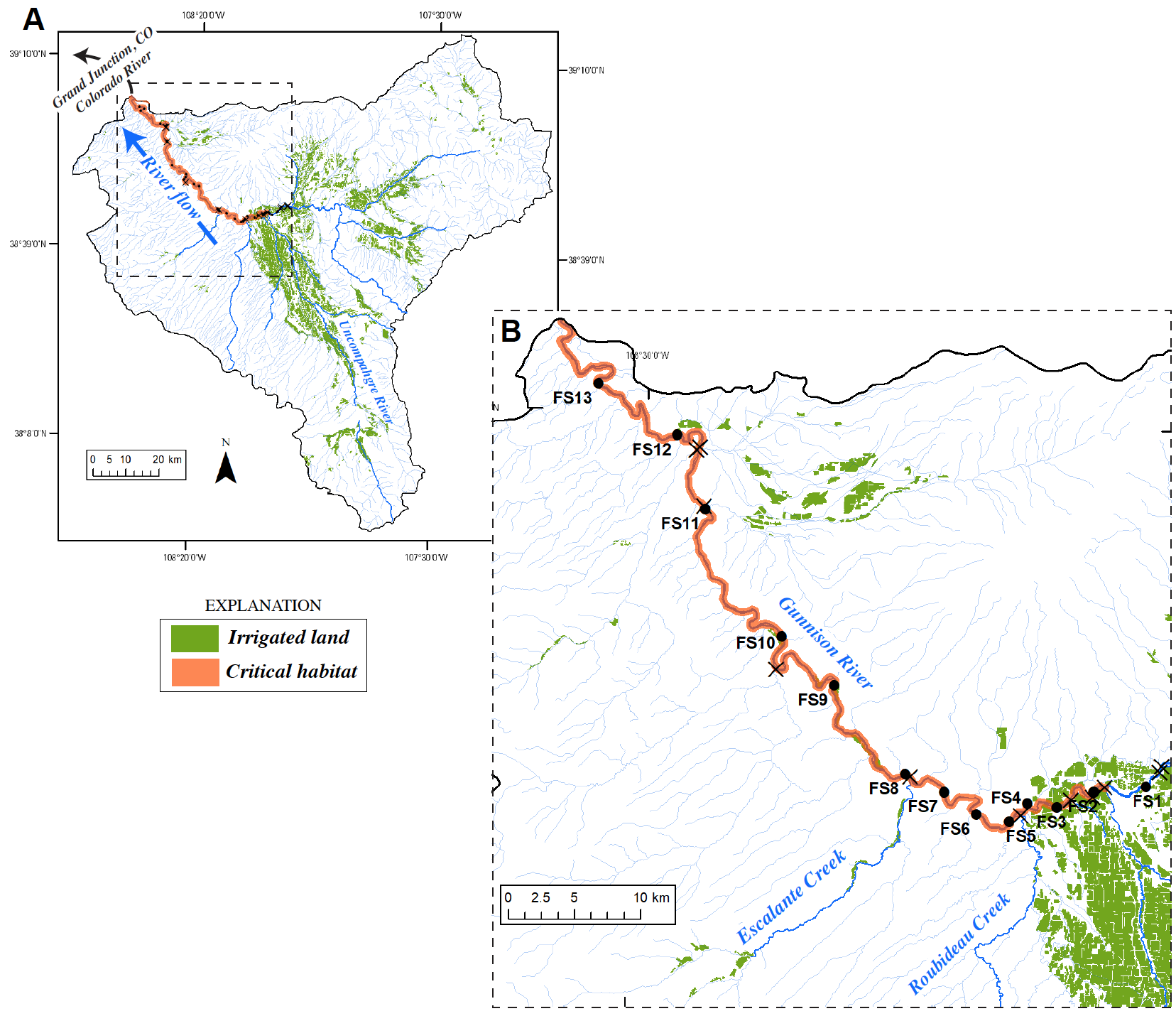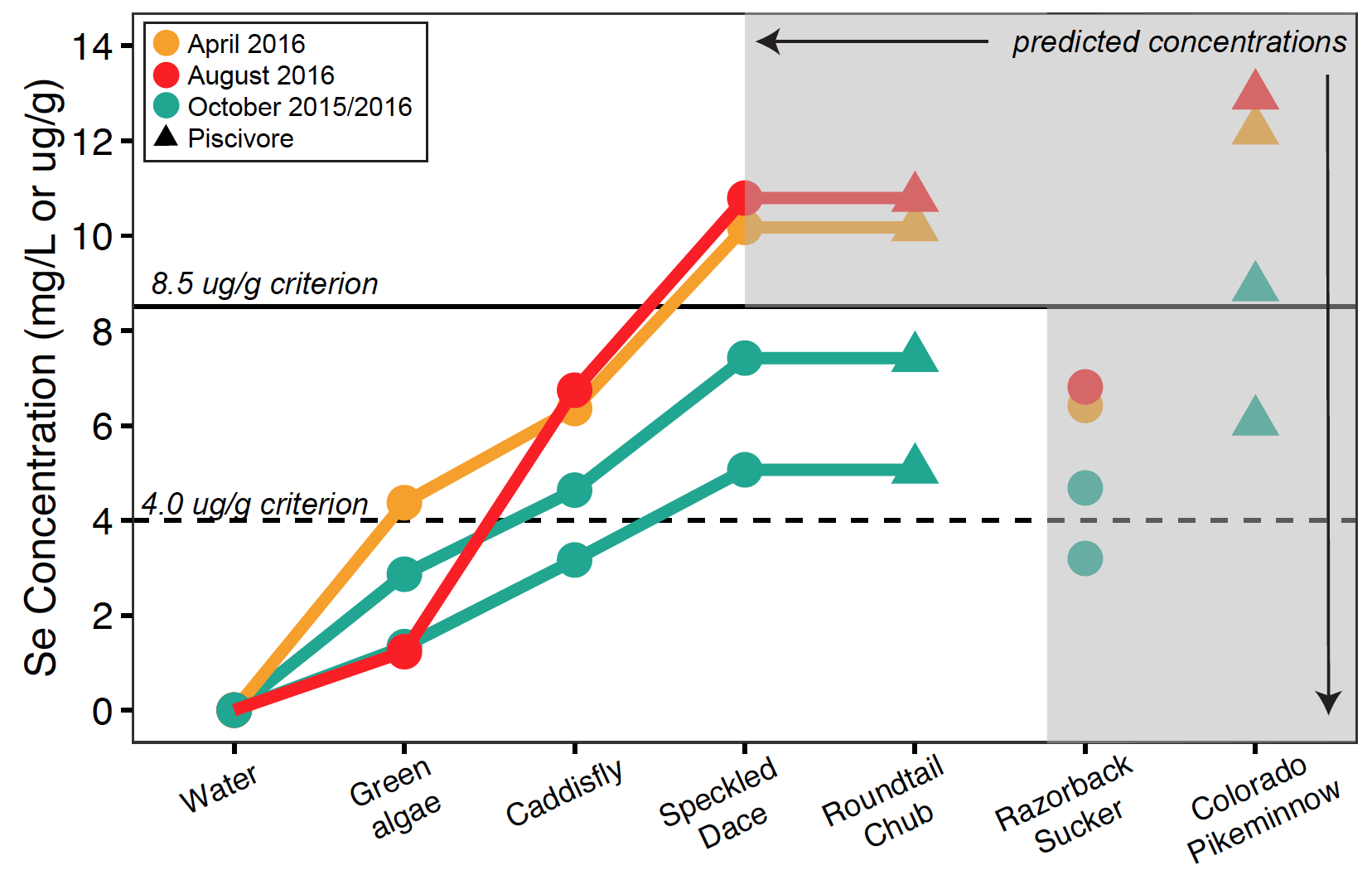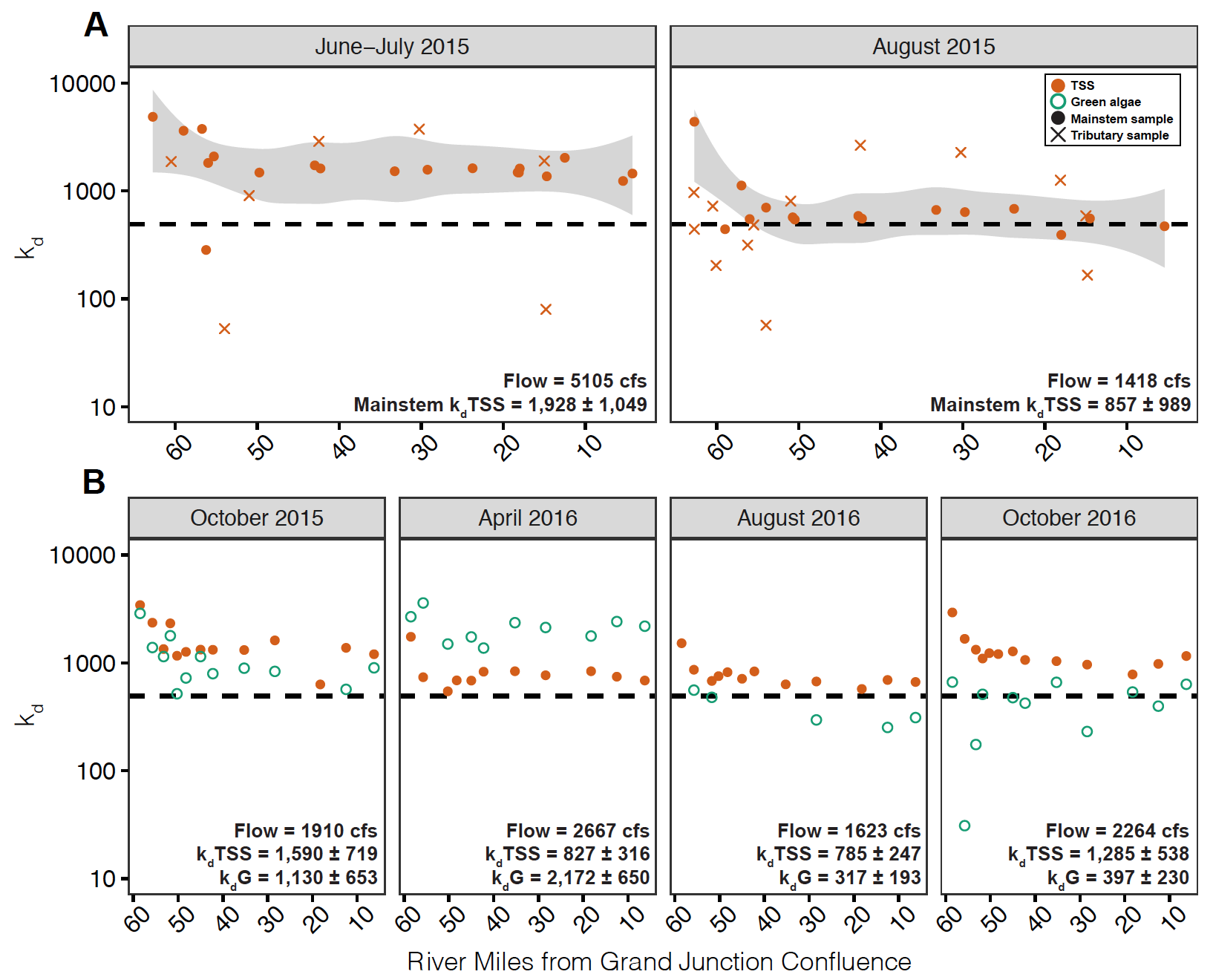Our research group works at the intersections of ecology, biogeochemistry, and environmental toxicology to study how food webs mediate contaminant fate and influence in and across aquatic ecosystems. We are interested in the biological factors influencing contaminant movement through food webs, contaminant consequences for fish and invertebrate fitness, and how other environmental change factors mediate these processes. Our research uses a combination of field and lab experiments, data syntheses, and ecological modeling. Read below for more information about our ongoing projects.
Nutrient and contaminant biotransport across ecosystem boundaries
Many aquatic species travel between ecosystems over the course of their lifetimes, taking with them the nutrients and contaminants stored in their tissues or exoskeletons. We are interested in the magnitude of this phenomenon at local to continental scales and explore the trade-offs between nutrient and contaminant loading to recipient ecosystems. The lab is currently working on several projects under this theme:
a) Selenium trophodynamics in the Clark Fork River Basin. The Clark Fork River was designated as a Superfund site in 1986 due to mining-related contamination with metals and metalloids. New work by our group is characterizing the aquatic-to-terrestrial pathways of selenium movement from streams to riparian spiders, and aims to inform toxicity risks for arachnivorous birds. Project team: Chloé Zampetti, Jess Brandt, Travis Schmidt, Ashley Bussell, Bridger Creel, Ben Colman, and Johanna Kraus.
b) PFAS partitioning and trophic transfer in the Long Island Sound watershed. PFAS are now ubiquitous contaminants of aquatic resources. Our group is interested in developing a better understanding of PFAS mixtures as they move through aquatic food webs and from riparian and terrestrial food webs via emergent insects. This project is based in CT’s Farmington River watershed and builds on prior research by our group to characterize PFAS concentrations and mixtures in groundwater discharges. Project team: Kaitlyn Campbell, Jess Brandt, Ashley Helton, David Walters, Alison Baranovic, Johanna Kraus, and Marty Briggs.
Related publications:
JE Brandt, J Wesner, G Ruggerone, T Jardine, G Ruso, K Voss, CA Stricker, CA Eagles-Smith, DM Walters. 2024. Continental-scale nutrient and contaminant delivery by Pacific salmon. Nature, DOI: 10.1038/s41586-024-07980-2
Plus a News & Views piece by Amanda Subalusky and Lily Twining
And a Nature Podcast episode discussing the work (~11:30 m)
KS Campbell, A Pelletier, JE Brandt, CR Perkins and AA Provatas. 2024. Advancing environmental monitoring: Rapid quantitation of 28 PFAS in aquatic insect tissue using QuEChERS extraction coupled with UPLC-MS/MS, Current Topics in Analytical Chemistry, 15: 69 – 85.
Contaminant dynamics in the coastal Long Island Sound
Contaminant uptake at the base of aquatic food webs establishes baseline concentrations for subsequent trophic transfer to sensitive consumers, including people. These processes are susceptible to ecosystem-level changes including changes in nutrient status and food web structure. These research projects explore the relationships between (a) nutrients, (b) phytoplankton productivity, biomass, and community composition, and (c) contaminant uptake and trophic transfer efficiency at the base of the coastal LIS food webs.
a) Spatial and temporal variation in mercury uptake and trophic transfer to oysters. In addition to the well-studied influence of nitrogen, phosphorous, and carbon, we are interested in the role that micronutrient selenium plays in this dynamic system of feedbacks. Project team: Anika Agrawal, Jess Brandt, Rob Mason, and the CT Department of Agriculture’s Bureau of Aquaculture.
b) Seasonal variation in PFAS uptake and trophic transfer. Project team: Kaitlyn Campbell, Jess Brandt, Chris Perkins, the UConn Center for Environmental Sciences and Engineering, and the CT Department of Agriculture’s Bureau of Aquaculture. Related research lead by Kaitlyn Campbell and Zofia Baumann explores PFAS in fish and shellfish in the context of human exposure risks for the New Haven County community.
c) PFAS-temperature interactions and ecological fitness. Project team: Maria Rodgers, Margot Grimmelpont, Jess Brandt, Milton Levin, Dan Bolnick, Kat Milligan-McClellan.
Related publications:
KS Campbell, JE Brandt, SA Ayers, CR Perkins, AA Provatas. 2024. Comprehensive determination of 28 PFAS compounds in oyster tissue: A QuEChERS sample preparation coupled with UPLC-MS/MS. Analytical Letters, 57(3): 355-367, DOI: 10.1080/00032719.2024.2302399
KS Campbell, JE Brandt, SA Ayers, S Stapcinskaite, CR Perkins, AA Provatas. 2023. Quantification of PFAS in oyster tissue using a Rapid QuEChERS extraction followed by UHPLC-MS/MS analysis. Analytical Letters, DOI: 10.1080/00032719.2023.2208692
Ecosystem-scale selenium impairment and selenium-mercury interactions
Selenium trophodynamics, physiology, and conservation influence in freshwater systems
Selenium loading to freshwaters contributes to persistent conservation problems for many species of ecological and cultural significance. We work in impaired systems in western North America to inform Se science for management. We use spatially and temporally intensive sampling of water, particulates, and food web items to analyze the influence of seasonal and biological processes on contaminant trophic transfer from the base of aquatic food webs to consumers. At the individual scale, we hope to contribute mechanistic understanding of selenium’s role in redox balance. New work is using historic records from water and sediment sampling and fish otoliths to relate Se loading with resident population dynamics. These data inform ecosystem-scale models and regional management plans that can be tailored to a number of ecosystem contexts.
Project team: Noëlie Molbert, Travis Schmidt, James Roberts, Craig Stricker, Rachel Johnson, Fred Feyrer, Jim Dunnigan, and others.
Related publications and datasets:
SD Graves, N Molbert, DM Janz, JE Brandt, LD Hayhurst, L Timlick, VP Palace. 2023. Relationships among tissues, biofluids, and otolith selenium concentrations in wild female Burbot (Lota lota). IEAM, 00: 1-11, DOI: 10.1002/ieam.4874
JE Brandt, JJ Roberts, CA Stricker, HA Rogers, P Nease, TS Schmidt. 2021. Temporal influences on selenium partitioning, trophic transfer, and exposure in a major U.S. river. Environ. Sci. Technol., 55(6): 3645-3656, DOI: 10.1021/acs.est.0c06582
TS Schmidt, JJ Roberts, CA Stricker, HA Rogers, P Nease, JE Brandt. 2021. Dataset for temporal influences on selenium partitioning, trophic transfer, and exposure in a major U.S. river: Data release, U.S. Geological Survey, https://doi.org/10.5066/P9TD4THX
Selenium-mercury interactions
Research in the 1970s pointed to the potential for Se to inhibit mercury (Hg) toxicity, increasing interest in Se as a mediator of the health risks associated with Hg exposure via fish and seafood consumption. We are working to address a number of open questions about Se-Hg interactions in freshwater systems, including how coupled Se and Hg behavior in aquatic food webs is influenced by chemical speciation, macronutrients, biochemistry, and community composition.
Related publications:
CJ Zampetti and JE Brandt. 2023. Co-considering selenium concentrations alters mercury-based fish and seafood consumption advice: A data compilation and critical assessment. Environ. Sci. Technol. Lett., 10(2): 179-185, DOI: 10.1021/acs.estlett.2c00925
JR Gerson, DM Walters, CA Eagles-Smith, ES Bernhardt, JE Brandt. 2020. Do two wrongs make a right? Persistent uncertainties regarding environmental selenium-mercury interactions. Environ. Sci. Technol. (Perspective), 54(15): 9228-9234, DOI: 10.1021/acs.est.0c01894




